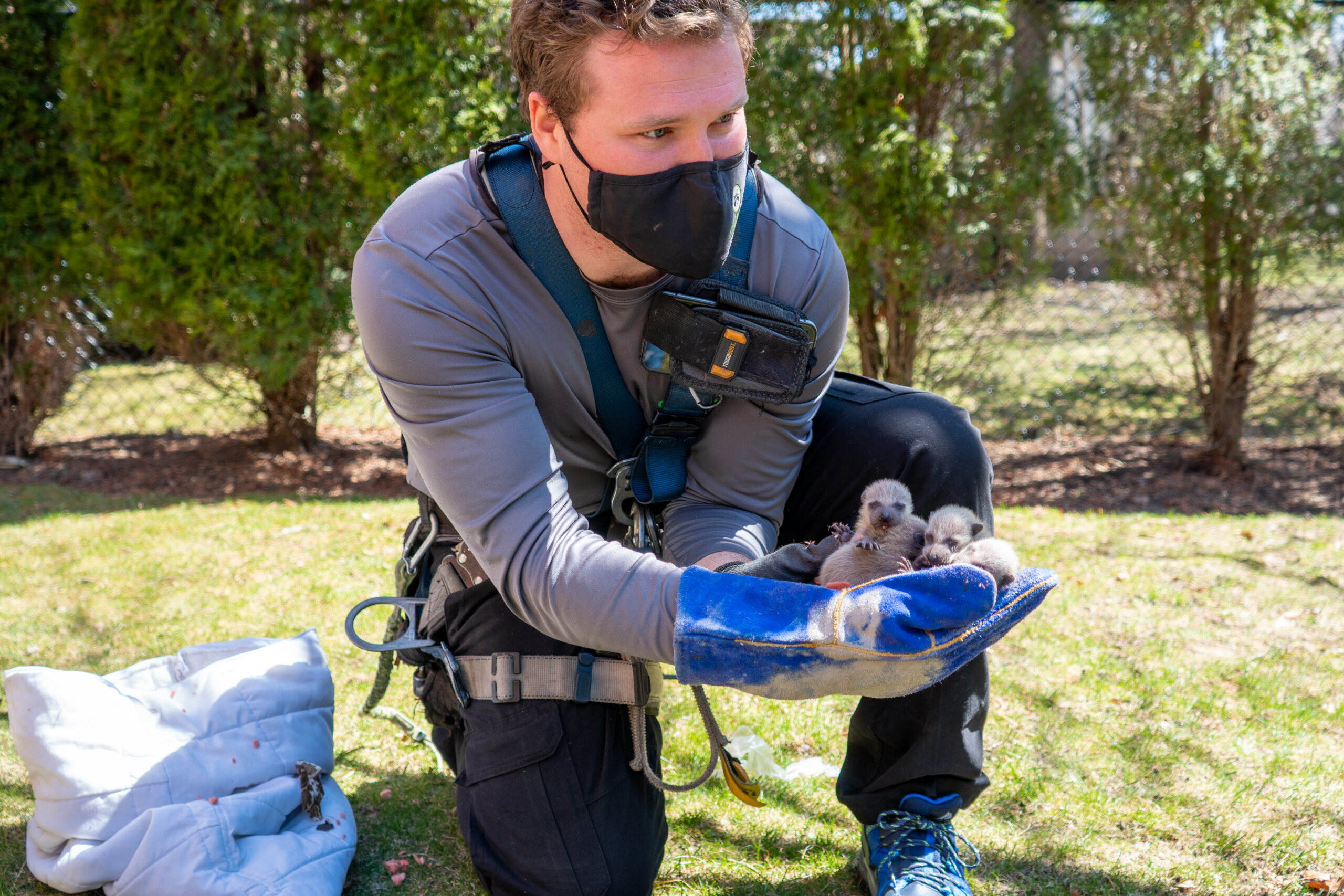If you were to look out your window and see a dozen raccoons in your yard, how would you describe them when calling for wildlife control in Okanagan? A quick internet search will tell you that the term for a group of raccoons is a nursery or a gaze. These strange words are more historical than scientific but they do correspond to fascinating raccoon behaviours. Here are some reasons that raccoons might have earned these names.
A History of Unusual Names
The tradition of calling a group of animals by a colourful collective noun has roots in Europe’s Middle Ages. During this time, hunters had their own unique jargon and would size each other up by how well they knew the animal group names. A famous book of the day, “The Book of Saint Albans”, listed 150 lighthearted names for groups of animals and even for some human occupations including a superfluity of nuns and a sentence of judges.
English settlers had never seen a raccoon before coming to North America because the species was not native to Europe. And since a collective name for this new animal was not in “The Book of Saint Albans”, one of the colonists must have simply invented one. No one knows who first christened a group of raccoons as a nursery or a gaze but the terms have endured until modern times.
A Nursery of Raccoons
The word nursery usually means a place to care for human, animal, or plant babies. In spring, raccoons give birth to litters of three to seven kits and care for them inside a hollow tree or other cozy location. Thus, using the word nursery to describe a group of raccoons might refer to the appearance of a den full of young ones.
Another possible inspiration for the term nursery instead might have been a mother raccoon walking through the forest with her babies trailing close behind. Family groups are a common sight in late summer when kits grow mature enough to leave the nest and forage with their mother. They stay in a family group until the following spring when they set up their own dens nearby.
A Gaze of Raccoons
If you have ever shone a flashlight and caught a raccoon looking back at you with its reflective red eyes, then you have an idea why another collective name for them is a gaze. The reason raccoons tend to gaze at humans who are confronting them is probably that they are near-sighted. However, they do see in colour and have excellent night vision.
Hunters of the 16th century referred to dogs that hunted by sight rather than scent as gazehounds. Therefore, using the word gaze to refer to a group of raccoons instead may have stemmed from an erroneous idea that raccoons have a poor sense of smell. Scientists now know that raccoons can detect odours at a great distance, an ability that causes them to raid trash cans in search of food.
Too Many Raccoons
A family of seven or eight raccoons is an endearing sight, but not when it is living inside your home. If raccoons are using your attic or garage as a den, don’t attempt raccoon removal on your own. Even if you succeed in getting them out, they may simply return a few days later. Worse yet, another pregnant female will enter next fall to start the cycle all over again.
Asking Skedaddle to help means technicians will gently remove any babies and place them in a heated box for the mother raccoon to collect and relocate to a more appropriate den site. As part of our prevention and protection services, they will then search out and seal all the potential raccoon entry points on your house. Our products are designed to stand the test of time and leave little trace on a home. Contact us today to keep your property from becoming home to a nursery of raccoons.






